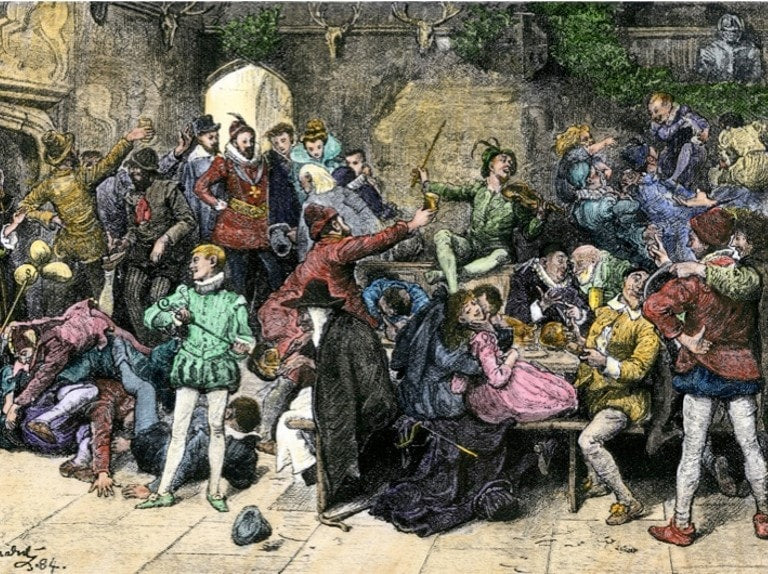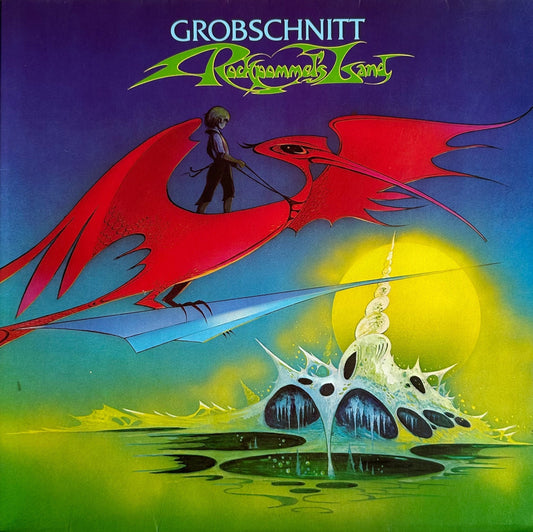First, the Nice part:
One of my earliest memories of hearing recorded choral music was of a particular disc from David (not yet Sir David) Willcocks and the Choir of King’s College, Cambridge. The record was entitled Jesu, Priceless Treasure, because it featured Bach’s great motet Jesu meine Freude BWV 227, which the Choir sang in William Bartholomew’s 19th-century “Englished” version. Willcocks’s performance, recorded in 1959, gave half a nod to modern practice — he brought in organist Simon Preston plus a cellist and bassist to play continuo accompaniment—but bowed to Victorian principles as to tempi (slow) and phrasing (à la Mendelssohn). Whereas 21st-century performances of BWV 227 usually clock in at around 20 minutes, Willcocks took nearly 27.
It didn’t matter. I loved it. Still do. When December rolls around, nothing warms my heart like hearing the Choir of King’s College singing something. Lately we’ve gotten a flood of lovely releases from them, occasioned in part by the 100th anniversary celebration of the Festival of Nine Lessons and Carols and in part by their fond, sad farewell to Sir Stephen Cleobury (1948–2019), who directed the Choir for 37 years.

Which seems like a long time until you consider the Choir’s history. Hugh of Balsham, Bishop of Ely, founded Petershouse, the first Cambridge college, in 1284. More significant for music at Cambridge was the activity of King Henry VI, who founded King’s in 1441 and provided it with a choir of 24 “singing men and boys.” He initiated work on the Chapel five years later, insisting from the outset that it be “without equal in size and beauty.”
This is the structure within which the King’s College Choir has offered daily Evensong, Sunday Eucharist, and all manner of special services since the time of Richard III, who saw to the completion of the Chapel’s first five bays around 1484; the entire edifice was not completed until late in the reign of Henry VIII, fully a century after its original foundation stone was laid.
Why dwell on this building? Because for centuries, its special acoustic has forcefully shaped the sound of the King’s College Choir. I can offer no better testimony than what I wrote for TMT 91 after attending Evensong in the Chapel:
It was quite an evening. The Chapel itself, with its high vaulted ceiling, stained glass windows, and splendid Late Gothic architecture, provides an inspiring visual environment. . . . Those who queue up early get to perch in the choir stalls. That way they hear more of the Choir and less of the room, which I’m told has a 12-second reverberation time. (From the stalls, it feels more like three or three-and-a-half; see comparisons here). . . . When the Choir begins to sing, one feels as if the chapel has been flooded with light. The intensity of the sound is physically shocking. . . . Somehow the Choir has, over the centuries, learned to use the Chapel’s vast inner space as a kind of amplifier. They are not defeated by this room; instead they seem to regard it as their own Marshall Stack. As that day’s service continued with Byrd, Victoria, and Tye, I adjusted to the extraordinary music being made, but I was never less than astonished by its beauty and coherence.
A caveat: When allowed to sing freely with proper breath support, British boy sopranos produce a penetrating sound that can overwhelm the choral balance at climactic moments. The Chapel acoustic compounds this effect. Listen to the way the sopranos knock out a high B-flat in this clip from Bruckner’s festive occasional motet Ecce sacerdos magnus:
In terms of recordings, this year has brought a veritable feast of new releases from the King’s College Choir. My personal favorite is the Bruckner Mass in E Minor album we sampled above.
Anton Bruckner (1824–96), known today for his symphonies, began as a Catholic organist and choirmaster. He wrote a lot of church music, including three large-scale masses. The first and third are symphonic in style and scale; the second, in E minor, features wind accompaniment and is overall slightly more “polyphonic.” For earlier generations, that connoted a Cecilian sensibility favoring the supposed purity of Palestrina. But Bruckner’s youthful experiences at the Monastery of St. Florian acquainted him with livelier Venetian polychoral styles, including antiphonal effects favored by the Gabrielis, Lassus, and others. Consider the call-and-response patterns that occur toward the end of this clip from the “Gloria” of the Mass in E Minor:
|
Gloria in excelsis Deo. Et in terra pax hominibus bonæ voluntatis. Laudamus te; benedicimus te; adoramus te; glorificamus te. Gratias agimus tibi propter magnam gloriam tuam. Domine Deus, Rex coelestis, Deus Pater omnipotens. Domine Fili unigenite Jesu Christe. Domine Deus, Agnus Dei, Filius Patris. |
Glory be to God in the highest. And in earth peace to men of good will. We praise Thee; we bless Thee; we worship Thee; we glorify Thee. We give thanks to Thee for Thy great glory. O Lord God, Heavenly King, God the Father Almighty. O Lord Jesus Christ, the only begotten Son. Lord God, Lamb of God, Son of the Father. |
The album rounds off with five more motets, among them “Christus factus est,” shown below in a video shot at the recording sessions. (Click here for text.)
It should be noted that when the Choir produces a recording like the Bruckner album, they do not occupy their customary position in the choir stalls. Instead members are arranged in formations that provide for optimum audio capture of the scheduled repertoire. The Christmas Eve radio broadcasts do not allow for such flexibility, and their audio quality can differ greatly.
That is reflected in a new download-only collection out this month, Carols from King’s (2020 Collection), a compilation from the two Christmas services (a TV broadcast and the Christmas Eve service) given at King’s in December 2019. Newly installed Director of Music Daniel Hyde conducts the Choir in both. The selection of carols is mostly fresh and the recording is usually quite good. Here are a few tastes:
And the premiere of 2019’s commissioned carol, “The Angel Gabriel” by Philip Moore:
If you’d rather hear the Christmas Eve service complete, with readings and prayers, The Centenary Service from 2018 remains available. I’d like to suggest another worthy item for consideration, composer Errollyn Wallen’s EP Peace on Earth. Three of her sacred choral works are performed by the Choir, recorded in June 2019 and conducted by Sir Stephen Cleobury. Wallen, who studied at King’s, is well-known in the UK for her skill in blending pop and traditional sounds. All three selections are available on YouTube: the gentle “Peace on Earth,” a more adventurous “See that I am God” (text from Julian of Norwich), and finally the rapturous “Pace.”
Happy holidays, one and all!
And now for the Naughty part.
Put the kids to bed, tune in Met Opera on Demand, and get a load of Gioachino Rossini’s 1828 opéra, Le Comte Ory. I stumbled on it a couple of weeks ago, doing research for my bel canto essays. It’s “late” Rossini, one of the last stage works he composed before taking early retirement. In this sex comedy set in the Middle Ages, Crusaders from the castle of Formoutiers have set off for the Holy Land, leaving their wives and sweethearts behind. But libidinous young Count Ory is still around, earnestly attempting to satisfy the ladies’ desires. After first disguising himself as a hermit, he and his entourage finally try out a scheme suggested by his page Isolier: they will dress as female religious pilgrims and gain entrance to the castle, where the women have gathered. In the meantime Isolier himself has begun to woo Countess Adèle, the focus of Ory’s own seductive stratagems.
Things come to a chaotically comic climax in Act II, especially the trio shown below from the Met production, directed by Broadway veteran Bartlett Sher and featuring Diana Damrau (Adèle), Joyce DiDonato (Isolier), and Juan Diego Flórez (Ory). As the scene opens, Isolier has finally managed to convince the Countess of his devotion to her. To demonstrate his fidelity, he has warned the ladies that they are sheltering not religious pilgrims but Ory and his minions. As Isolier and Adèle make their way toward a bed that has conveniently materialized, Ory enters the chamber unseen in the darkness, sick with love for the Countess, hoping to breathe the air she has breathed. (Actually, he’s hoping for more than that.) Isolier and Adèle quickly devise a trap for him.
Many uproarious bits follow, right up to the point when fanfares announce the Crusaders’ return. Rossini’s music for this scene (and indeed for the whole opera) is among the best he ever created; much of it was reworked from Il viaggio a Reims, a masterpiece tossed off for the coronation of Charles X. It’s true bel canto — suave, delicate, and demanding. According to Rossini expert Philip Gossett, the young Hector Berlioz “gazed openmouthed at its [orchestral] scoring.” This trio would take your breath away even if it wasn’t great theatre. But it is!
Now we’re ready to take on Rossini staples like La Cenerentola and Il barbiere di Siviglia — next time.



